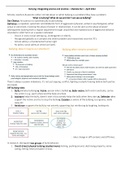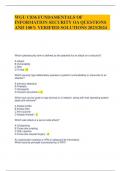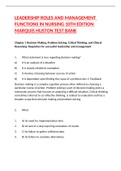Samenvatting
2.7C Summary Lecture 3- Bullying: integrating science and practice – Marieke Buil – April 2022
- Instelling
- Erasmus Universiteit Rotterdam (EUR)
Extensive summary of the Lecture Bullying: integrating science and practice – Marieke Buil – April 2022. Please leave a like if your enjoyed my summary!
[Meer zien]













